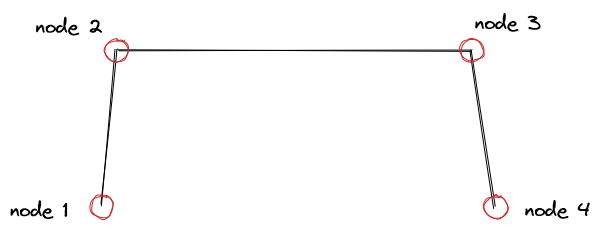Torsion bars are used when you want to have a certain amount of resistance to torque between two levers. They are defined using 4 nodes, which define the end of the first lever, the two nodes that serve as the axis, and the end of second lever.
They are used to simulate structures that resist forces in torsion like sway bars, and to help rigidify flat structures like ladder chassis and shock mounts of suspension arms without the use of rigidifier nodes.
If a beam located between 2 consecutive nodes of a torsion bar breaks, the torsion bar itself will break.
Required arguments
Optional arguments
Simple Example
"torsionbars": [
["id1:", "id2:", "id3:", "id4:"],
["node1", "node2", "node3", "node4"],
],
Advanced Example
"torsionbars": [
["id1:", "id2:", "id3:", "id4:"],
{"spring":10000000, "damp":100, "deform":25000, "strength":100000},
//rigidify steering arm
["oma1tl", "oma1l", "oma1r", "omatiltr"],
["oma1tr", "oma1r", "oma1l", "omatiltl"],
],

